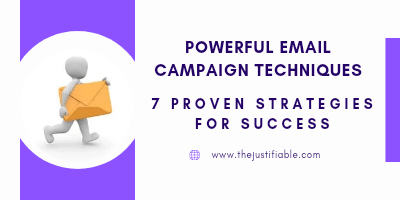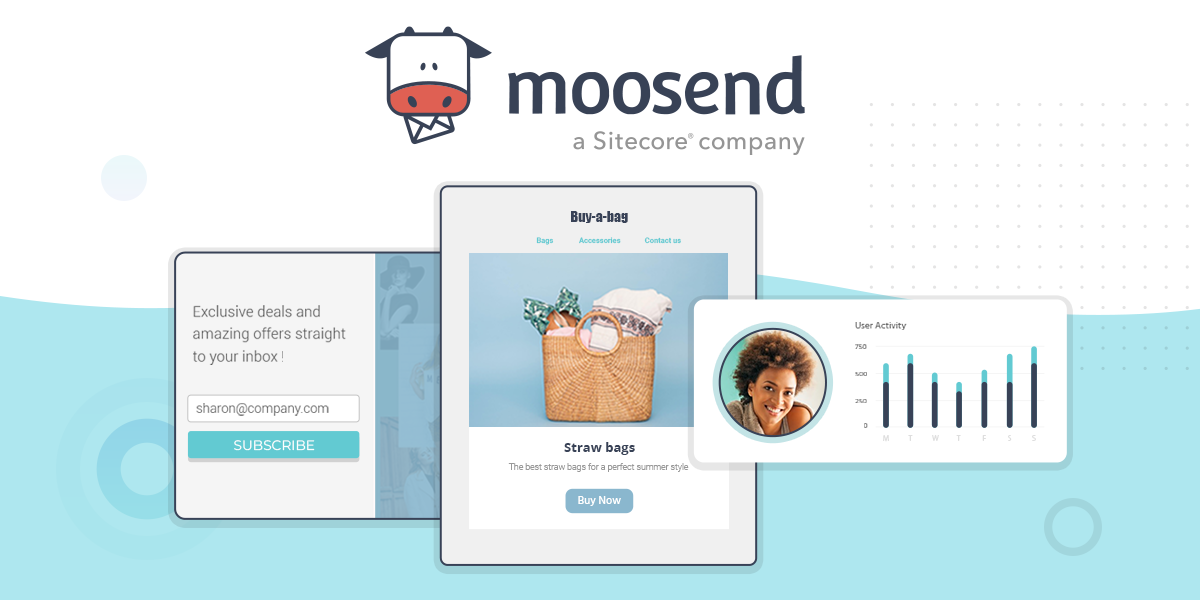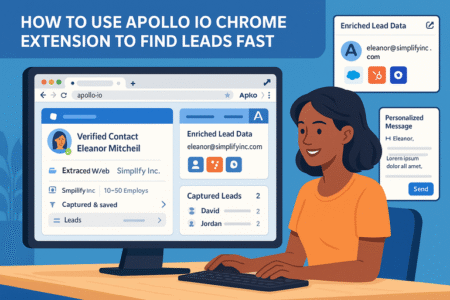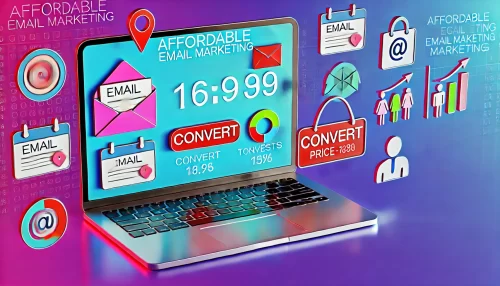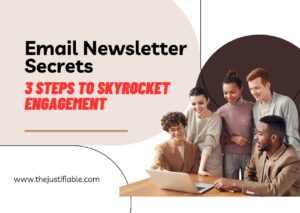Table of Contents
In the ever-changing landscape of digital marketing, executing a potent email campaign remains a cornerstone strategy for businesses of all sizes. It’s a direct and personalized way to connect with potential clients, nurture leads, and foster a loyal customer base.
Before delving deeper into this potent marketing tool, let’s elucidate what an email campaign encompasses and why strategic planning in email marketing is paramount.
What is an Email Campaign?
An email campaign is a coordinated set of individual email messages that are dispatched across a specific period with one unified goal in mind. These campaigns are meticulously planned to resonate with a specific audience segment, thereby promoting engagement and encouraging a desired action, such as making a purchase, signing up for a webinar, or sharing content with their networks.
The strength of an email campaign lies in its ability to offer personalized, timely, and relevant content to the recipients, fostering a deeper connection between the brand and the customer.
But to say an email campaign is merely a set of messages would be an understatement. It’s a synergistic endeavor that integrates copywriting, design, analytics, and strategy, working in harmony to convert prospects into customers and one-time buyers into loyal advocates.
When effectively orchestrated, an email campaign can act as a conduit that nourishes the relationship between a brand and its audience, fostering a sense of trust and community.
The Importance of Strategic Email Marketing
In an era saturated with digital noise, the importance of strategic email marketing cannot be stressed enough. It stands as a beacon of personalized communication amidst a sea of impersonal advertisements.
A strategic approach to email marketing involves more than just crafting enticing subject lines; it encompasses a well-rounded strategy that considers the customer’s journey, preferences, and behaviors.
Furthermore, strategic email marketing helps in refining the brand message and ensuring that the communication is cohesive and aligned with the overarching business goals. It fosters a two-way conversation, where feedback and engagement from the audience can be used to further tailor and enhance future campaigns.
Moreover, it enables businesses to maintain a steady and sustainable growth trajectory, as it typically garners higher ROI compared to other forms of digital marketing.
By emphasizing a strategic approach, businesses can steer clear of common pitfalls such as sending too many emails, which can lead to increased unsubscribe rates, or sending too few, and missing opportunities to connect with their audience.
Through data-driven insights and meticulous planning, strategic email marketing ensures that every message sent serves a specific purpose and resonates with the intended audience, thereby paving the pathway to a successful and fruitful email campaign.
1. Personalization: Making Your Email Campaign Stand Out
In the vast realm of digital marketing, where countless emails flood inboxes daily, how does one ensure that their email campaign doesn’t get lost in the clutter? The answer lies in a single word: personalization.
Personalizing your email campaign is a potent strategy to not only capture the attention of your audience but also to forge a genuine connection with them, paving the way for enhanced engagement and conversion rates.
Using Recipient Names for a Personal Touch
Imagine walking into a local café where the barista remembers your name and your favorite order. That sense of being recognized and valued is exactly what using a recipient’s name in an email achieves.
By addressing the recipient by their first name, the email immediately evokes a sense of familiarity and rapport. This seemingly simple act transforms an otherwise generic message into a conversation that’s tailor-made for the recipient.
Yet, this is not just about starting an email with “Dear [Name]“. The art of personalization can weave the recipient’s name seamlessly into the content, making it feel as if the email was crafted just for them.
For instance, “Sarah, we thought you’d love these new arrivals!” possesses a warmth that generic marketing messages often lack. Such personalized touches enhance the user’s experience, making them feel seen and valued by the brand, which invariably boosts the efficacy of the email campaign.
Segmenting Your Audience for Targeted Messaging
While using names is a step in the right direction, true personalization dives deeper. It’s about delivering the right message to the right person at the right time. This is where segmenting your audience comes into play.
Segmentation involves dividing your email list into distinct categories based on specific criteria, such as buying behavior, location, age group, or even how often they engage with your emails. Once these segments are established, you can tailor your messages to align with the unique needs and preferences of each group.
For example, customers who frequently purchase skincare products from your online store would appreciate recommendations or tips related to skincare. On the other hand, those who’ve shown interest in fashion accessories would resonate more with content highlighting the latest trends in that arena.
By segmenting your audience and tailoring your messaging, you elevate the relevance of your email content. Instead of casting a wide net with a one-size-fits-all approach, segmentation allows you to hone in on what truly matters to each recipient. This results in emails that are perceived as valuable and pertinent, rather than just another promotional message to be glossed over.
2. Crafting Compelling Subject Lines
Arguably, one of the most crucial elements in your email campaign is the subject line. In a sea of unopened emails, a captivating subject line acts as a beacon, signaling the recipient to dive in. It’s the first impression, the digital equivalent of a handshake, or a storefront window, beckoning potential customers.
A subject line can make or break your email campaign, determining if your email gets opened or ends up languishing unopened—or worse, in the trash bin. Let’s delve into the art and science behind crafting compelling subject lines that captivate and compel.
The Power of Curiosity-Driven Lines
Harnessing the innate human trait of curiosity is a game-changer in email campaigns. Think about it; how often have you clicked on an article, video, or email simply because the title made you wonder, “What’s this about?” Curiosity-driven subject lines pose a question, make a bold statement, or hint at something intriguing within the email, ensuring the recipient’s interest is piqued.
For instance, a subject line like, “You won’t believe what we have for you!” naturally induces a sense of wonder. The recipient becomes eager to unveil the mystery, prompting them to open the email.
By leaving just enough to the imagination, curiosity-driven subject lines act as a tantalizing teaser for the content inside, making them powerful tools in the email campaign arsenal.
Emojis, Power Words, and Urgency in Subject Lines
In the digital age, where brevity is the soul of wit, emojis have emerged as a universal language of emotion and intent. Incorporating emojis in subject lines adds a dash of personality and flair, making your email stand out visually in an overcrowded inbox. A simple heart, smiley, or even a ticking clock emoji can convey sentiments that words might take longer to express.
Power words, on the other hand, are words that evoke strong emotions or reactions. Words like “exclusive,” “unbelievable,” or “ultimate” possess a certain gravitas that commands attention. When used judiciously in subject lines, power words can amplify the email’s perceived value, urging the recipient to take action.
Lastly, instilling a sense of urgency is a time-tested strategy in marketing. When recipients feel that time is of the essence, they’re more likely to act swiftly. Subject lines that hint at limited-time offers or fleeting opportunities, such as “Last chance to grab your deal!” or “Offer ends tonight,” create a sense of urgency that nudges recipients towards immediate action.
When emojis, power words, and urgency come together in harmony, they can craft a subject line for your email campaign that is not only attention-grabbing but also emotionally resonant and action-inducing.
3. Mobile Optimization: Ensuring Accessibility on Every Device
In today’s fast-paced digital age, the way people access their emails has evolved dramatically. Gone are the days when most users accessed their inbox strictly from desktop computers. With the proliferation of smartphones and tablets, checking emails on-the-go has become the norm.
For any email campaign to achieve its desired impact, mobile optimization is no longer a luxury—it’s an imperative. By ensuring that your emails look great and function seamlessly on every device, you stand a better chance of engaging your audience and driving the desired actions.
Design Considerations for Mobile Users
Aesthetics and functionality must go hand in hand, especially when considering mobile users in your email campaign. Mobile screens are compact, which means that every pixel counts. It’s not just about scaling down the desktop version; it’s about reimagining the design to cater to a smaller screen while retaining all essential elements.
For starters, the font size should be legible without the need for users to zoom in. Call-to-action buttons need to be of a size that’s easy to tap with a fingertip, eliminating the chances of misclicks. Moreover, images should be optimized for mobile view, ensuring they load swiftly and don’t eat up too much data.
Another key aspect is the flow of content. On mobile devices, with their limited screen real estate, content should be presented in a concise yet engaging manner. Users should be able to grasp the main message and take desired actions without endless scrolling or navigating through complex layouts. Essentially, when designing for mobile users, simplicity, clarity, and ease-of-use should be the guiding principles.
The Significance of Responsive Email Templates
Beyond the initial design considerations, the tech backbone of your email plays a pivotal role. This is where responsive email templates come into play. A responsive template automatically adjusts the layout, images, and other elements of your email based on the device it’s being viewed on.
Whether your recipient opens the email on a desktop, tablet, or smartphone, a responsive template ensures it always looks its best.
The significance of these templates in your email campaign cannot be overstated. Users today have little patience for emails that don’t display correctly on their devices. If they have to pinch, zoom, or squint to read your email, the chances are high that they’ll simply delete it.
On the other hand, a well-optimized, responsive email offers a seamless user experience, increasing engagement rates and enhancing the overall impact of your campaign.
4. A/B Testing: Refining Your Email Campaign for Better Results
In the dynamic arena of email marketing, success isn’t achieved by mere chance. Behind every effective email campaign lies a meticulous process of testing, analyzing, and refining. A/B testing, often referred to as split testing, emerges as one of the most potent tools in a marketer’s arsenal.
By comparing two versions of an email to see which one performs better, A/B testing offers empirical insights, guiding you towards creating the most effective email campaign possible.
Elements Worth Testing in Your Email
When it comes to A/B testing in your email campaign, the possibilities are vast. Almost every component of your email can be tested to optimize for better results. However, it’s essential to approach this systematically, focusing on elements that can substantially impact your email’s performance.
One of the primary elements to consider is the subject line. Since it’s the first thing your recipients see, testing different subject lines can reveal which one grabs attention and entices more opens. Similarly, the email’s opening line or preheader can be experimented with to gauge its influence on engagement.
Next, the email content itself, including images, copy, and call-to-action buttons, presents a plethora of testing opportunities. For instance, an email campaign might test two different visual themes or copy tones to ascertain which resonates more with the audience. Similarly, varying the color, wording, or placement of call-to-action buttons can yield insights into what drives more clicks.
Moreover, even factors like the sending time and day can be put to the test. Determining when your audience is most receptive can significantly boost open and engagement rates.
Analyzing A/B Test Results for Actionable Insights
Conducting A/B tests is only half the battle. The real value lies in decoding the results, drawing meaningful conclusions, and translating them into actionable insights for your email campaign.
To begin with, it’s crucial to have a clear objective for each test. Whether it’s increasing the open rate, boosting click-through rates, or driving more conversions, having a defined goal helps in gauging the test’s success.
Once the results roll in, it’s not merely about noting which version (A or B) performed better. It’s about understanding why. For instance, if a particular subject line led to more opens, delve into the specifics. Was it because it evoked curiosity? Did it offer value or urgency? Understanding the underlying reasons allows you to replicate the success in future campaigns.
5. Value-driven Content: Engaging Readers with Useful Information
In the world of email marketing, it’s easy to get caught up in the cycle of continuous promotions and sales pitches. However, recipients today are savvy, discerning, and inundated with countless emails vying for their attention.
The key to standing out? Offering value-driven content. By focusing on delivering genuinely useful information, email campaigns can foster trust, build lasting relationships, and encourage meaningful engagement with readers.
The Balance of Promotional and Informational Content
It’s a common misconception that emails, especially those from brands or businesses, should predominantly push products or services. While promotions have their place, an email campaign that leans too heavily into sales can come off as aggressive or inauthentic. This can lead to diminishing returns, with recipients tuning out or even unsubscribing.
Instead, striking a balance is crucial. Imagine receiving an email from a brand not just about their latest sale, but also offering tips related to their products, industry insights, or even a behind-the-scenes look at their operations. Such content does more than just inform; it educates and enriches the reader’s understanding.
For instance, a skincare brand can intersperse promotions with tips for maintaining healthy skin, DIY face mask recipes, or the latest skincare trends. This approach ensures that every email is anticipated and welcomed, as readers receive more than just sales pitches; they gain knowledge.
The Role of Visuals in Content Engagement
The adage, “A picture is worth a thousand words,” holds especially true in email campaigns. While well-crafted textual content is vital, visuals add a layer of engagement that words alone might not achieve. Images, infographics, videos, and even GIFs can transform a simple email into a visually rich experience, grabbing attention and ensuring the message is retained longer.
Visuals play a multifaceted role in content engagement. Firstly, they break the monotony of text, offering a visual respite and making the email more scannable. A reader can quickly glance through and understand the email’s essence even if they don’t delve into every word.
Additionally, visuals can often convey complex information more succinctly than text. An infographic about a product’s benefits or a short video tutorial can be more impactful than paragraphs explaining the same. Furthermore, visuals can evoke emotions, be it through the colors used, the subjects of the images, or the stories told in videos. This emotional connection can enhance content engagement manifold.
6. Effective Call-to-Action (CTA) Placement
In the vast ocean of email marketing, the Call-to-Action (CTA) serves as the guiding lighthouse, directing recipients towards a desired action, be it making a purchase, signing up for an event, or reading a blog post. But a CTA’s effectiveness isn’t solely dependent on its wording or design; its placement within the email can greatly influence its impact.
By understanding the characteristics of a compelling CTA and strategically placing it for optimal visibility, an email campaign can significantly boost its conversion rates.
Characteristics of a Compelling CTA
An effective CTA is a harmonious blend of design, content, and psychology. It’s not just a button or a link; it’s an invitation to an experience or a value proposition. Therefore, crafting a compelling CTA involves various considerations.
For starters, the wording is paramount. The language should be action-oriented and convey a sense of urgency or benefit. Phrases like “Discover More,” “Grab Your Deal,” or “Join Now” are clear, concise, and evoke a sense of action.
However, it’s not just what the CTA says, but also how it looks. Its design should make it stand out, but without clashing with the overall email aesthetics. The choice of color, size, and shape can influence its visibility and click-through rate. For instance, contrasting colors can make the CTA pop, while a size that’s neither too large nor too small ensures it’s noticeable but not overwhelming.
Lastly, a compelling CTA taps into the reader’s psychology. It offers a solution, a benefit, or an experience. Whether it’s the promise of a discount, exclusive content, or a sense of belonging to a community, the underlying message is that clicking on the CTA adds value to the reader’s life.
Strategically Placing CTAs for Higher Conversions
Even the most well-crafted CTA can fall flat if it’s not strategically placed within the email. Placement can influence visibility, engagement, and ultimately, conversions.
A common approach is to place the CTA above the fold, ensuring it’s visible without the need for scrolling. This captures the attention of readers who may only skim through the email. However, another school of thought advocates for placing the CTA at the end, after providing valuable content, building a narrative, and then directing the reader to take action.
Sometimes, it might even be beneficial to have the CTA appear multiple times, especially in longer emails. For instance, one can be placed after a compelling piece of content and another towards the end as a reminder. This ensures that readers have multiple opportunities to engage.
Moreover, the CTA’s placement should also consider the email’s overall layout and design. It shouldn’t disrupt the flow but rather feel like a natural progression in the reader’s journey through the email.
7. Maintaining Email List Hygiene for a Successful Email Campaign
In the realm of email marketing, the temptation often lies in the pursuit of ever-growing subscriber numbers. However, quality invariably trumps quantity. A bloated email list, riddled with inactive or unengaged subscribers, can be more of a hindrance than an asset.
Ensuring email list hygiene isn’t just about boosting open rates or avoiding spam traps; it’s about cultivating an engaged community genuinely interested in what you have to offer. The key lies in understanding the importance of regular list cleaning and finding ways to breathe new life into inactive subscribers.
The Need for Regular List Cleaning
Every email list, over time, accrues subscribers that are no longer engaged or even valid. These can be accounts that have become dormant, emails that were mistyped, or users who’ve lost interest in the content you provide. Sending emails to these addresses not only results in lower open and click-through rates but can also negatively affect your sender reputation.
Internet Service Providers (ISPs) gauge the health of an email campaign not just by content but also by how recipients interact with it. High bounce rates, low engagement, or being marked as spam can push future emails straight to the junk folder, even for engaged subscribers.
Regularly cleaning your email list ensures that you’re reaching out to those genuinely interested. It’s a proactive measure to weed out hard bounces (invalid email addresses) and identify soft bounces (temporary issues like a full inbox). Beyond just improving metrics, list cleaning can lead to more targeted campaigns, better segmentation, and a genuine understanding of your core audience.
Re-engaging Inactive Subscribers
While cleaning out non-responsive emails is crucial, it’s equally vital to attempt re-engaging subscribers before they fade into inactivity. Everyone’s inbox gets cluttered, and even your most ardent supporters might miss out on some emails or lose touch over time.
One approach is to craft a dedicated re-engagement campaign. This can be a heartfelt email, acknowledging the subscriber’s absence and offering them a roundup of what they might have missed. Exclusive deals, sneak peeks, or even a simple poll asking for their preferences can reignite their interest.
Another strategy is to segment inactive subscribers and tailor content specifically for them. Perhaps they’re more responsive to a particular type of content or offer. Monitoring their interaction patterns can provide insights into what would make them click and engage again.
However, it’s essential to recognize when it’s time to part ways. If after multiple attempts, subscribers remain unresponsive, it might be in the best interest of your email campaign’s health to let them go.
8. Monitoring and Analyzing: The Pulse of Every Email Campaign
For any marketer, sending out an email campaign is just half the journey. The true essence of email marketing success lies in understanding how recipients interact with those emails. This requires more than just intuition or guesswork; it requires data-driven insights.
Monitoring and analyzing key metrics provide a window into the subscribers’ preferences, behaviors, and the overall health of your campaign, empowering marketers to fine-tune their strategies for optimal results.
The Significance of Open and Click-Through Rates
Open rates and click-through rates are, arguably, two of the most direct indicators of an email’s effectiveness. An open rate signifies the percentage of recipients who opened the email, offering insights into the potency of your subject lines and the timing of your email sends. A higher open rate suggests that your email stands out in a crowded inbox, piquing curiosity and interest.
On the other hand, the click-through rate represents the percentage of recipients who clicked on a link within your email. It’s a clear indicator of the email content’s relevance and appeal. If subscribers are regularly opening your emails but not clicking through, it may be a sign to reevaluate your content’s alignment with their interests or the effectiveness of your CTAs.
Bounce Rates and Unsubscribe Rates: Warning Signs to Heed
While positive engagement metrics are crucial, it’s equally important to monitor potential red flags. Bounce rates and unsubscribe rates serve this purpose.
Bounce rates can be categorized into ‘hard’ and ‘soft.’ Hard bounces refer to emails that couldn’t be delivered due to invalid email addresses, indicating a pressing need for list cleaning. Soft bounces might be due to temporary issues, like a recipient’s mailbox being full. Continual monitoring can determine if soft bounces transform into hard ones.
Unsubscribe rates, though disheartening, offer invaluable feedback. A spike in this metric post a particular campaign might suggest that the content or the frequency of emails needs adjustment. It’s a direct message from subscribers about what they don’t find valuable, allowing for course correction before further damage is done.


